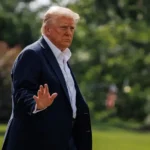
China’s world-dominating electric vehicle sector reached two important milestones last year. First, China has overtaken Japan as the world’s largest auto exporter, thanks in part to affordable Chinese EVs. And second, EV giant BYD briefly surpassed Tesla as the world’s biggest seller of battery-electric cars in the last quarter of 2023. (Tesla has since retook the top spot.)
But the threat of a flood of cheap EVs is spooking foreign governments. The European Union launched an anti-subsidy investigation into Chinese electric vehicle companies last year, which could result in higher tariffs for Chinese electric vehicles. The US – which considers Chinese cars a threat to national security – warns that “excess capacity” in China could overwhelm world markets.
But at the Fortune Innovation Forum in Hong Kong last week, Roger Atkins, founder of Electric Vehicles Outlook, an electric vehicle consultancy, noted that previous car exporters have found a way to manage the protectionist backlash.
“We’ve been here before,” Atkins said. “Japan had its export attack on the US and Europe in the 1970s and 1980s. The Europeans and Americans imposed tariffs, and the way the Japanese got around that was to set up production plants in those places.”
Atkins then pointed to BYD’s new factory in Hungary as an example of how the Chinese automaker is now expanding its presence in global production.
(BYD is also building factories in Thailand and Brazil and is considering new production facilities in Indonesia and Mexico.)
Christopher Beddor, deputy director of China research at Gavekal, saw parallels with previous campaigns led by Beijing to encourage the solar and wind energy industries. “China is essentially doubling down on its industrial policy,” he noted.
“Central leadership will say, ‘We want to target a certain industry.’ Everyone focuses on it, it’s done campaign style,” she explained.
Beijing is now beginning to worry about excess capacity in the system, with one official in early January promising to take “strong action” to address new electric vehicle projects that were not supported by demand.
This push and pull is part of China’s industrial playbook, Beddor said. “[As autoridades] go ahead, [então] At some point, there is a recognition [de que] they went too far. They pull it back,” he said.
Beijing began offering tax and infrastructure incentives in the early 2010s, helping to promote up to 500 electric vehicle companies at any given time. Since then, that number has dropped to around 100 companies.
China is now reducing its support for the sector, which could lead to further consolidation as electric vehicle companies, many of which have not yet turned a profit, exit the market.
However, Paul Gong, executive director of automotive research at UBS, told the forum last week that the “fierce competition” in the sector – between startups, legacy automakers and even tech giants – has been good for the industry. to market competition, “China’s automakers have actually reduced the cost of electric vehicles to the same level as [motores de combustão interna]”, he said. “It was this market force that brought the game of innovation [e] of efficiency.”
Tesla’s WORLD
Gong, at last week’s forum, also discussed the differences between BYD and Tesla, both of which are fighting for the position of the world’s largest seller of electric vehicles.
After the Tesla Model 3 was dismantled five years ago, Gong said the UBS team was “shocked by how far ahead Tesla was in terms of technological leadership.”
However, a similar teardown of a BYD car a few years later revealed that the company’s level of technological sophistication was approaching that of Tesla.
“There is little gap [na] technology, but just different priorities,” he said. Tesla has prioritized top speed and autonomous driving, while BYD has focused on space and 5G connectivity, he added.
However, Gong noted a critical difference: a BYD car, comparable to the Model 3, costs 15% less than production at Tesla’s Shanghai gigafactory.
Unlike Tesla, BYD manufactures its own battery, the Blade, and therefore does not have to rely on an external supplier like CATL or LG Energy Solution. (The battery can make up up to 40% of the cost of an EV.)
“We were shocked at how quickly BYD recovered,” Gong said.
Text by Fortune
Source: https://www.ocafezinho.com/2024/04/08/analista-explica-porque-a-tesla-de-elon-musk-esta-ficando-pra-tras/

